Related Research Articles

The 48th Highlanders of Canada is a Canadian Forces Primary Reserve infantry regiment based in Toronto, Ontario, parading out of Moss Park Armoury. The regiment is part of 4th Canadian Division's 32 Canadian Brigade Group.
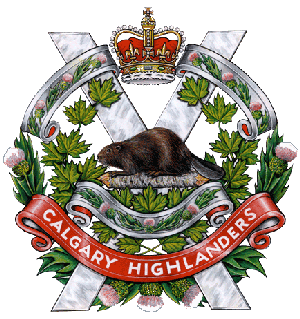
The Calgary Highlanders is a Canadian Army Primary Reserve infantry regiment, headquartered at Mewata Armouries in Calgary, Alberta, Canada. The regiment is a part-time reserve unit, under the command of 41 Canadian Brigade Group, itself part of 3rd Canadian Division, one of four region-based Canadian Army divisions. The regiment is one of only two regiments in the Canadian Forces to wear an honorary distinction on their uniform, commemorating the counterattack at Kitcheners' Wood. On 9 January 2015, the regiment was recognized with the Canadian Forces' Unit Commendation for outstanding contributions to the war in Afghanistan.

The South Alberta Light Horse, or SALH, is a Reserve armoured reconnaissance regiment of the Canadian Army based in Medicine Hat, Edmonton and Lethbridge, Alberta. The SALH is part of 3rd Canadian Division's 41 Canadian Brigade Group. The "Light Horse" designation comes from its light cavalry and mounted infantry origins.

The Royal Hamilton Light Infantry (RHLI) is a Primary Reserve infantry regiment of the Canadian Army, based at John Weir Foote VC Armoury in Hamilton, Ontario. The RHLI is part of 31 Canadian Brigade Group, which is part of 4th Canadian Division.

The King's Own Calgary Regiment (RCAC),, is a Canadian Army armoured reconnaissance regiment of the Canadian Armed Forces Primary Reserve. Headquartered at the Mewata Armoury in Calgary, Alberta, the KOCR is a part-time reserve unit of 3rd Canadian Division's 41 Canadian Brigade Group. Its regimental museum is located in Calgary.

The Toronto Scottish Regiment is a Primary Reserve infantry regiment of the Canadian Army. It is part of 4th Canadian Division's 32 Canadian Brigade Group.

The Argyll and Sutherland Highlanders of Canada , or A & SH of C, is a Primary Reserve Highland infantry regiment of the Canadian Forces, based at John W. Foote VC Armoury in Hamilton, Ontario.
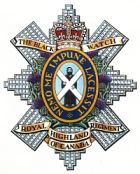
The Black Watch of Canada is a reserve infantry regiment in 34 Canadian Brigade Group, 2nd Canadian Division, of the Canadian Army. The regiment is located on Bleury Street in Montreal, Quebec, Canada, and is currently commanded by Lieutenant-Colonel J.B.F Roy, CD. The regiment's armoury was designated a National Historic Site of Canada in 2008. They are the senior Canadian-Scottish Regiment.
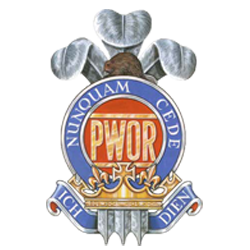
The Princess of Wales' Own Regiment (PWOR) is a Primary Reserve infantry regiment of the Canadian Forces.

The Seaforth Highlanders of Canada is a Primary Reserve infantry regiment of the Canadian Army based in Vancouver, British Columbia. The regiment is subordinate to 39 Canadian Brigade Group, 3rd Canadian Division. Based at the Seaforth Armoury on Burrard Street in Vancouver, the regiment serves in both times of war and civil emergency, such as disaster relief after earthquakes or floods. It also contributes individual volunteers or "augmentees" to Canadian Forces operations around the world.

The Canadian Scottish Regiment is a Primary Reserve infantry regiment of the Canadian Army based on Vancouver Island in British Columbia.
The 138th Battalion, CEF, was a unit in the Canadian Expeditionary Force during the First World War.
The 202nd (Sportsmens) Battalion, CEF was a unit in the Canadian Expeditionary Force during the First World War. Based in southside Edmonton, Alberta, the unit began recruiting during the winter of 1915/16 in that city and surrounding district. It was formally authorized on July 15, 1916. Its headquarters were in the Sheppard Block at 10316 Whyte Avenue.
The 218th Battalion, CEF, was a unit in the Canadian Expeditionary Force during the First World War. Based in Edmonton, Alberta, the unit began recruiting in early 1916 in that city.

Battalion Park is a geoglyph site in southwest Calgary, Alberta, Canada. It is located on Signal Hill, overlooking the Tsuu T'ina Nation, as well as lands formerly known as Camp Sarcee and later Sarcee Training Area, a military reserve used by the Canadian Forces from before the First World War up until the 1990s. The park extends over an area of 93 hectares, north of the Elbow River. Its heritage value is associated with its dedication to the heroic efforts of Albertan soldiers during the First World War. The site contains four geoglyphs, numbered 137, 113, 151, and 51. The large, whitewashed stones, totalling 16,000 in all, form the centrepiece of the park. Arranged on the side of the hill, and visible from various parts of the city, they represent the battalions numbered 137th, 113th, 151st, and 51st.
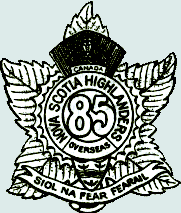
The 85th Battalion, CEF, was an infantry battalion of the Great War Canadian Expeditionary Force. The 85th Battalion was authorized on 14 September 1915 and embarked for Great Britain on 12 October 1916. Disembarking in France on 10 February 1917, it fought as part of the 12th Infantry Brigade, 4th Canadian Division in France and Flanders until the end of the war. The battalion disbanded on 15 September 1920. The battalion is most famous for capturing Hill 145 in their first battle. Today, the Vimy Memorial stands on Hill 145.

The 103rd Regiment was an infantry regiment of the Canadian Non-Permanent Active Militia, authorized at Calgary, Alberta, Canada, by General Order on 1 April 1910.

The 10th Battalion, Canadian Expeditionary Force was a unit of the First World War Canadian Expeditionary Force (CEF), specifically in the 1st Canadian Division from 1914 to 1919. The battalion participated in every major Canadian battle of the First World War, and set a record for the most decorations earned by a Canadian unit in a single battle at Hill 70. The unit was known to its contemporaries simply as The Fighting Tenth.
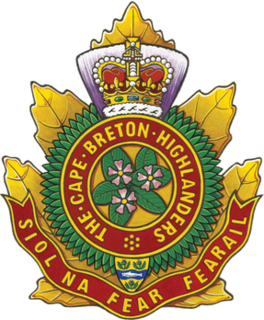
The Cape Breton Highlanders is an infantry regiment of the Canadian Army. It was established in 1871, merged into The Nova Scotia Highlanders in 1954, and re-established as a distinct regiment in 2011. It is part of the 5th Canadian Division's 36 Canadian Brigade Group and is headquartered at Sydney, Nova Scotia.

The 51st Battalion (Edmonton), CEF, was an infantry battalion of the Canadian Expeditionary Force during the Great War. The 51st Battalion was authorized on 7 November 1914 and embarked for Great Britain on 18 April 1916. It provided reinforcements for the Canadian Corps in the field until 13 November 1916, when it was reorganized as a garrison duty battalion. On 22 June 1917, its personnel were absorbed by the various regimental depots. The battalion was disbanded on 15 September 1920.
References
- Meek, John F. (1971). Over the Top! The Canadian Infantry in the First World War. Orangeville, Ontario: The Author.
- ↑ Appendix to General Order No. 123 of 1929
- ↑ "Fact Sheet: The Regimental Colours" (PDF). The Alberta Legislature. February 23, 2009. Retrieved November 5, 2011.